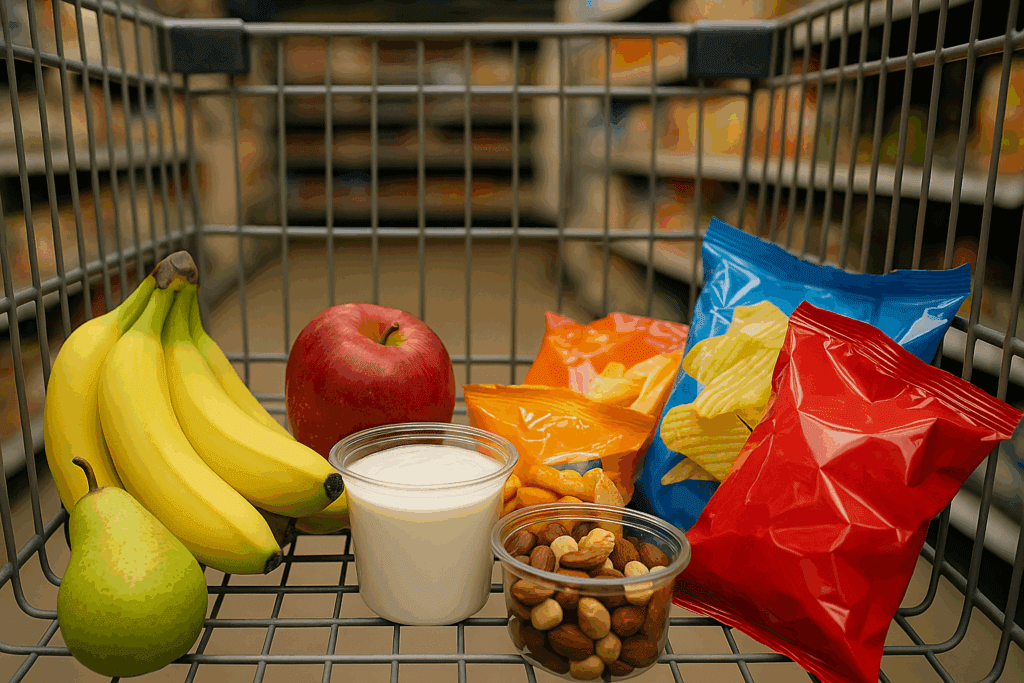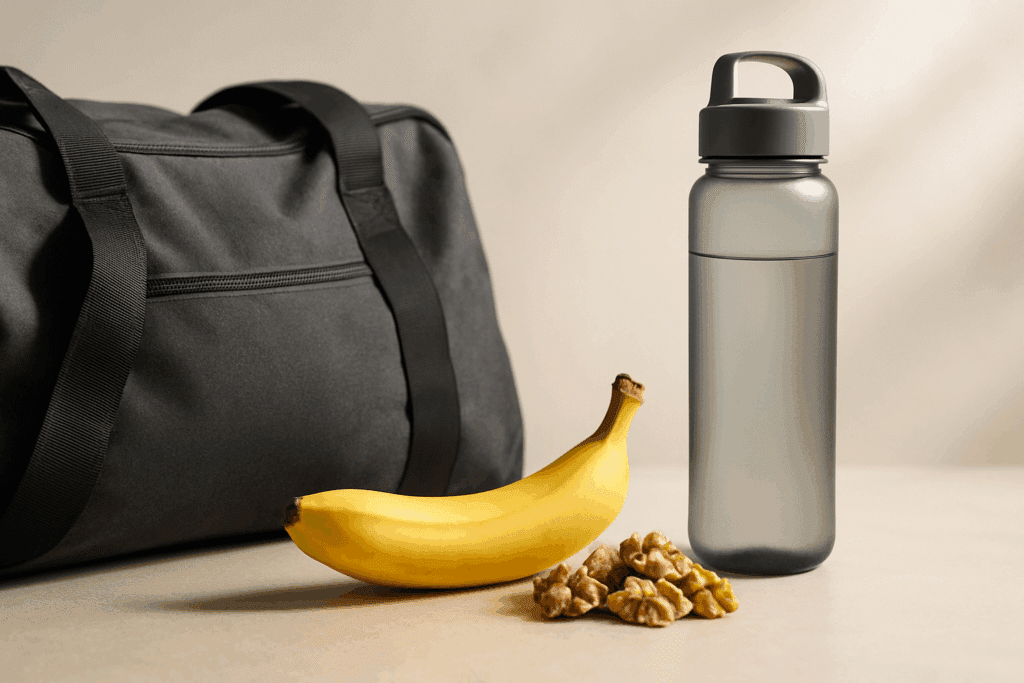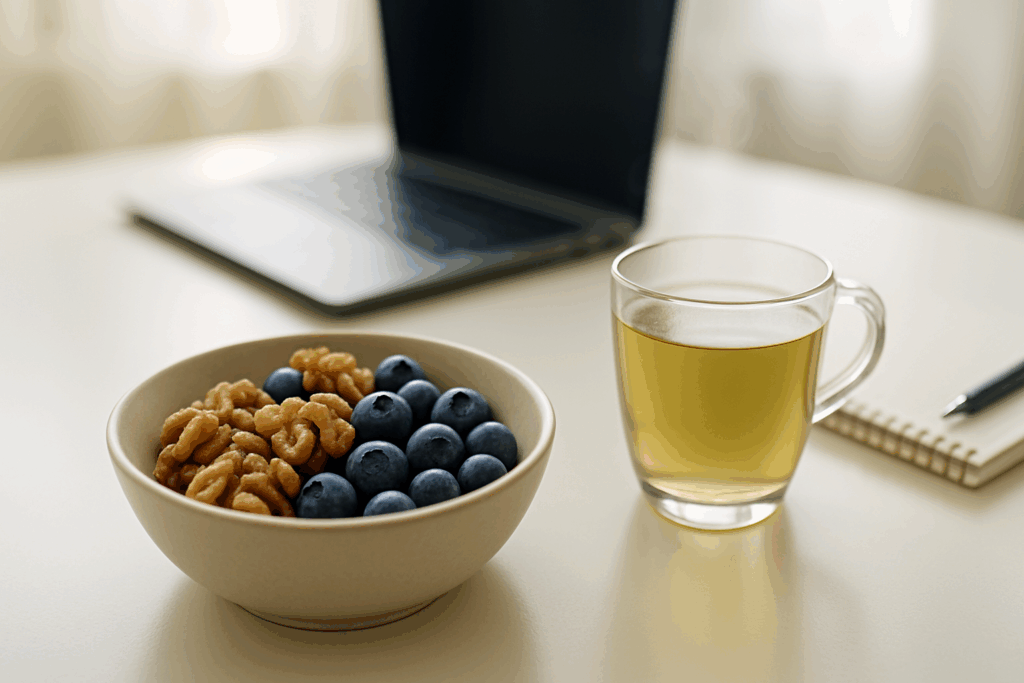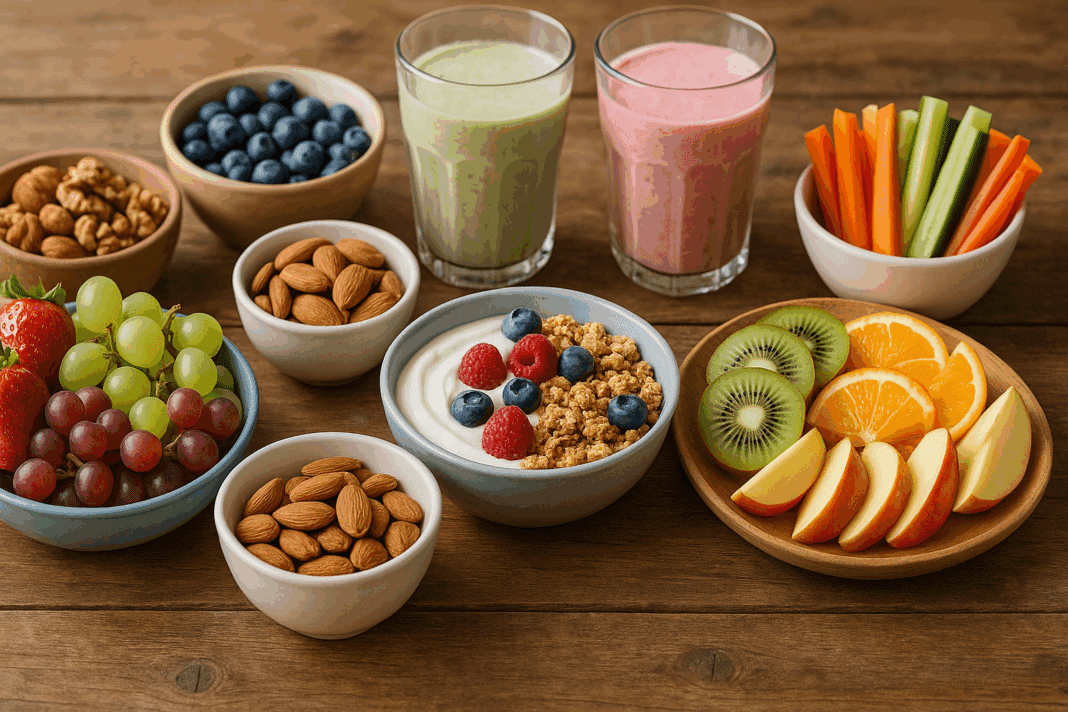In the modern world of fast-paced schedules and constant demands, snacking has evolved from a guilty indulgence into a key component of nutritional strategy. For many individuals striving to achieve better health outcomes, identifying the best snacks to eat can be the difference between energy slumps and sustained vitality, or between weight gain and balanced metabolic support. When planned with intention and informed by science, snacks can nourish the body, support cognitive clarity, and promote long-term wellness without compromising taste or enjoyment.
You may also like: 4 Ways to Have a Healthy Diet: Expert Tips Backed by Science for Better Nutrition and Long-Term Wellness
Understanding the Role of Snacks in a Balanced Diet
Contrary to outdated beliefs that labeled snacking as a habit to avoid, contemporary nutrition science recognizes its value when done correctly. Well-timed snacks can stabilize blood sugar, curb overeating at meals, and provide essential nutrients that may be lacking in standard meals. For individuals who engage in intermittent fasting or manage health conditions like hypoglycemia, snacking isn’t optional—it’s crucial.
Beyond its physiological role, smart snacking also supports emotional and psychological health. A nutrient-rich mid-afternoon snack can help prevent mood dips and irritability, particularly when it includes a balance of complex carbohydrates, healthy fats, and protein. Importantly, the definition of great snack foods isn’t limited to what’s low in calories or sugar-free—it also encompasses options that are satiating, nutritionally dense, and minimally processed.

Balancing Macronutrients for Optimal Snack Performance
When constructing a snack with purpose, considering macronutrient balance is foundational. The best snacks to eat for sustained energy and metabolic support typically combine protein, fiber, and healthy fats. This triad helps slow digestion, reducing blood sugar spikes and promoting satiety.
Protein-rich snacks, such as Greek yogurt or roasted chickpeas, support muscle maintenance and hormonal balance. Fiber, commonly found in fruits, vegetables, and whole grains, aids digestion and promotes a healthy gut microbiome. Healthy fats—like those in nuts, seeds, or avocado—can curb cravings and support brain health. Together, these macronutrients create a physiological synergy that extends the benefits of snacking well beyond hunger management.
Avoiding the pitfalls of carbohydrate-only snacks is essential. Items such as crackers, cookies, or sugary granola bars may offer a quick energy boost but often lead to an equally rapid crash. Instead, pairing a small amount of whole-food carbohydrate with protein or fat can create a snack that energizes and sustains.
Micronutrients Matter: Snacking as a Nutrient Delivery System
While macronutrients set the stage, micronutrients enrich the performance. Smart snacks can be vehicles for essential vitamins and minerals that support immunity, mood, and cellular function. For instance, a small handful of almonds delivers vitamin E and magnesium, while baby carrots provide beta-carotene, a precursor to vitamin A.
Leafy greens in a smoothie or bell peppers with hummus can supply vitamin C, a critical antioxidant that supports collagen synthesis and immune defense. Many great snack foods also deliver phytonutrients—plant-based compounds that offer anti-inflammatory, antimicrobial, and detoxifying properties.
Snacking can also help fill gaps in specialized diets. For example, vegans might snack on fortified nutritional yeast or pumpkin seeds to increase their intake of B vitamins and zinc. By approaching snack time as an opportunity for micro-nutrition, individuals can optimize overall dietary quality without increasing caloric load dramatically.

Timing and Portioning: The Science of Snacking Frequency
The timing of snacks plays a pivotal role in how they impact metabolism, hunger signals, and energy. While some individuals thrive on three large meals per day, others benefit from eating every three to four hours to maintain consistent blood sugar levels. The key lies in tuning in to one’s personal hunger cues and energy needs.
Snacking strategically between meals can prevent overeating at mealtimes, particularly for those with high caloric or protein needs such as athletes, pregnant individuals, or people recovering from illness. However, grazing throughout the day without mindfulness can lead to caloric surplus and digestive fatigue.
Portion control is equally essential. The best snacks to eat are those that satisfy without exceeding energy requirements. A good rule of thumb is to aim for 150 to 250 calories per snack, depending on individual activity level and dietary goals. Tools like pre-portioning, using smaller containers, or practicing mindful eating can support better portion awareness.

Whole vs. Packaged: Navigating the Snack Food Aisle
The convenience of pre-packaged snacks can be both a blessing and a nutritional minefield. Many packaged products are marketed as health foods but contain high amounts of added sugars, sodium, or low-quality oils. Understanding how to read nutrition labels and ingredient lists is essential for making informed decisions.
When evaluating great snack foods, simplicity often wins. Look for snacks with short ingredient lists composed of whole foods. A protein bar with recognizable ingredients like oats, dates, and nuts is preferable to one filled with sugar alcohols and synthetic additives. Similarly, air-popped popcorn with olive oil and sea salt can be a better choice than flavored varieties laden with artificial chemicals.
That said, not all packaged snacks are off-limits. Items like unsweetened nut butters, canned tuna, and plain kefir can be part of a balanced snacking strategy. The key is to prioritize whole-food snacks while integrating high-quality packaged options that meet rigorous nutritional criteria.
Smart Snacking for Energy Enhancement
For those who need a consistent supply of energy throughout the day—whether for work, caregiving, or physical performance—snacks can be a strategic ally. Complex carbohydrates such as oats, quinoa, or fruit provide the glucose the brain and muscles need to function. When paired with protein and fat, these carbs create an energy release that is both steady and sustainable.
Examples of energy-supportive snacks include apple slices with almond butter, cottage cheese with berries, or a boiled egg with a slice of whole grain toast. These snacks combine quick energy with the building blocks for cellular repair and muscle maintenance. Caffeine-containing snacks, such as green tea with dark chocolate, may also offer a cognitive lift without the crash associated with sugary options.
Snacking before physical activity can also enhance endurance and performance, particularly when done 30 to 60 minutes beforehand. A banana with a few walnuts or a rice cake with hummus can provide pre-workout fuel that won’t weigh you down. Post-workout snacks should include both protein and carbs to support recovery and glycogen replenishment.

Supporting Weight Control through Mindful Snacking
One of the most common misconceptions about snacking is that it hinders weight loss. In reality, well-timed and nutrient-dense snacks can support appetite regulation and reduce the likelihood of overeating at meals. The best snacks to eat for weight control are those that satisfy both physiological hunger and the psychological desire for flavor and texture.
Including a source of protein in snacks is especially effective for weight management. Research consistently shows that protein increases satiety and thermogenesis—the body’s calorie-burning response to food. A few slices of turkey breast rolled with avocado, or a small serving of edamame, can offer protein-rich solutions that align with caloric goals.
Fiber is another key ally in weight control. Foods like chia pudding, lentil dip with vegetables, or whole grain crackers provide bulk and digest slowly, helping maintain fullness for hours. Pairing fiber with fat and protein creates a trifecta of satiety that supports metabolic balance and reduces cravings.
Avoiding empty-calorie snacks is vital. Highly processed foods such as chips, candy, or sugary baked goods may temporarily satisfy taste cravings but rarely support long-term satiety. Replacing these with great snack foods rich in whole ingredients can significantly enhance both nutritional intake and body composition outcomes.
Snacks that Promote Gut Health and Immunity
Emerging research underscores the profound impact of the gut microbiome on overall wellness, including mood, immunity, and even weight regulation. Snacks that support gut health often contain fiber, probiotics, and prebiotics. By feeding beneficial bacteria, these foods promote a more balanced microbiome and reduce inflammation.
Examples of gut-supportive snacks include unsweetened yogurt with flaxseeds, kimchi with brown rice crackers, or kefir smoothies blended with berries. These foods not only supply live cultures but also offer antioxidants that help combat oxidative stress. For prebiotic content, look to foods like bananas, garlic hummus, or roasted Jerusalem artichokes.
Incorporating such snacks into a daily routine can enhance resilience to illness and improve digestive function. Because gut health is interconnected with mental health through the gut-brain axis, these choices may also positively affect mood and stress response.
Snacking for Cognitive Clarity and Mental Wellness
Nutritional neuroscience continues to uncover the intimate link between food and brain function. Certain nutrients play key roles in neurotransmitter production, synaptic plasticity, and cognitive endurance. The best snacks to eat for mental sharpness are those rich in omega-3 fatty acids, B vitamins, and antioxidant compounds.
Walnuts, for example, offer alpha-linolenic acid (ALA), a plant-based omega-3 that supports brain cell structure. Pairing walnuts with blueberries—a fruit high in flavonoids—can enhance memory and protect against age-related decline. Boiled eggs, rich in choline and vitamin B12, also contribute to neurotransmitter synthesis and focus.
Complex carbohydrates are equally important. The brain relies on glucose for fuel, and slow-digesting carbs from sources like oatmeal or sweet potatoes provide this energy without spiking insulin. Snacks that blend these brain-supportive elements foster sustained cognitive performance, making them especially valuable for students, professionals, and older adults.
Snack Customization for Special Diets and Lifestyles
Personalizing snacks according to dietary needs and health goals ensures better adherence and outcomes. For individuals with diabetes, pairing low-glycemic fruits like berries with protein sources such as cottage cheese or almonds can help maintain glycemic control. Those following a ketogenic diet may opt for snacks like avocado boats, cheese crisps, or celery with nut butter.
Plant-based eaters have a wealth of great snack foods at their disposal, from roasted edamame to lentil-based dips. Integrating complete protein sources, such as quinoa or soy, into snacks can help ensure adequate amino acid intake. Individuals managing food intolerances, such as gluten or dairy sensitivity, can look to options like rice cakes with sunflower seed butter or coconut milk yogurt with fruit.
Cultural preferences and lifestyle considerations also play a role. Traditional snacks like seaweed sheets, tamari-roasted almonds, or black bean dip can provide variety and familiarity, supporting dietary consistency. Regardless of specific dietary patterns, the best snacks to eat are those that respect individual health needs while delivering enjoyment and nourishment.

Frequently Asked Questions (FAQ): Smart Snacking for Energy, Weight Control, and Wellness
1. How can I make snacking work for me if I follow an irregular schedule?
If you work night shifts, have rotating hours, or simply keep irregular eating patterns, it’s still possible to use snacking as a tool for wellness. The key is to listen to your body’s natural hunger signals instead of defaulting to habitual eating times. In these situations, planning ahead with portable options becomes essential. Choosing the best snacks to eat during unpredictable hours can help you avoid impulse purchases that typically favor ultra-processed foods. Think about shelf-stable but nutrient-rich options like trail mix with seeds, dried edamame, or vacuum-packed olives—all of which are great snack foods that provide healthy fats, fiber, and a dose of plant-based protein.
2. What are some smart snack strategies for people who tend to emotionally eat under stress?
Emotional eating often triggers cravings for sweet, salty, or crunchy foods due to the way these textures and flavors activate the brain’s reward system. Instead of trying to eliminate snacking altogether, consider channeling it more intentionally. Create a “comfort snack box” stocked with the best snacks to eat during emotional highs or lows—such as dark chocolate-covered almonds, air-popped popcorn, or roasted chickpeas seasoned with herbs. These types of great snack foods provide satisfaction with fewer negative health consequences. You can also pair snacking with mindfulness techniques, like deep breathing or journaling, to disrupt automatic stress-eating cycles.
3. Are there innovations in the snack food industry that cater to both health and convenience?
Absolutely. The snack food industry is increasingly focusing on products that blend function with flavor, appealing to wellness-conscious consumers. For instance, brands are developing refrigerated protein bars with gut-friendly probiotics or freeze-dried smoothie bites that retain nutrients and fiber without needing refrigeration. These are not just trendy fads—they often qualify as great snack foods because they merge nutrition with accessibility. Consumers seeking the best snacks to eat while on the move should watch for emerging labels that emphasize transparency, minimal ingredients, and functional health benefits such as brain support or blood sugar stability.
4. How can snacking be adapted to support women’s health across life stages?
Women’s nutritional needs change across puberty, pregnancy, menopause, and beyond. Snacks tailored to these transitions can help fill critical nutrient gaps. For example, during menstruation or perimenopause, magnesium-rich snacks like pumpkin seeds or dark chocolate can help ease cramping and mood fluctuations. Pregnant individuals benefit from great snack foods rich in folate and iron, like lentil spreads or fortified nut bars. In postmenopausal years, snacks high in calcium and vitamin D, such as Greek yogurt with chia seeds, are among the best snacks to eat for bone support. By understanding hormonal shifts, women can tailor snacks to their body’s evolving demands.
5. What role does snacking play in managing chronic conditions like hypertension or prediabetes?
Snacking plays a critical role in managing blood pressure and blood sugar levels. For individuals with hypertension, potassium-rich snacks like avocado slices or banana with almond butter can help balance sodium levels naturally. In those with prediabetes, choosing great snack foods that combine protein and fiber—such as hummus with raw veggies or boiled eggs with a few whole grain crackers—helps slow glucose absorption. The best snacks to eat for chronic disease prevention focus on low glycemic index, minimal added sugars, and heart-supportive fats. Keeping these principles in mind allows snacking to become a form of proactive self-care rather than a health liability.
6. Can cultural preferences be honored while still choosing healthy snacks?
Absolutely—in fact, embracing cultural flavors can make snacking more sustainable and enjoyable. Traditional foods like roasted chickpeas (India), seaweed snacks (Korea), tamarind fruit (Mexico), or lupini beans (Mediterranean) are inherently nutrient-dense and qualify as great snack foods when consumed in moderation. These options honor culinary heritage while delivering functional benefits like fiber, plant-based protein, and antioxidants. Identifying the best snacks to eat doesn’t mean erasing cultural food practices; rather, it means elevating them with intentional choices that support health and well-being.
7. How can snacking support focus and productivity during long work or study sessions?
To optimize focus, snacks should fuel the brain without spiking blood sugar. Complex carbohydrates paired with protein, like oatmeal with sunflower seeds or apple slices with cheese, offer a steady stream of energy to support attention span. Omega-3-rich snacks such as walnuts or flaxseed crackers may further support cognitive flexibility and memory. Choosing the best snacks to eat during mentally demanding periods isn’t about finding the most exotic superfood—it’s about selecting great snack foods that stabilize blood glucose and keep neurotransmitter production humming. Even the act of pausing to enjoy a snack can refresh the mind and improve task engagement.
8. What are some overlooked whole foods that make excellent snacks?
While staples like almonds and yogurt get plenty of attention, lesser-known snack candidates can offer unique nutrient profiles. For example, roasted fava beans are high in plant-based protein and resistant starch, which aids in blood sugar regulation. Persimmons, when in season, are fiber-rich and satisfy sweet cravings without added sugar. Sardines on whole grain crispbread may not be trendy but are among the best snacks to eat for brain and bone health due to their omega-3 and calcium content. These underappreciated options are great snack foods hiding in plain sight, often at a lower price point and with fewer additives than mass-marketed choices.
9. How can I transition from processed snacks to more wholesome options without feeling deprived?
The transition to healthier snacking can be gradual and rewarding rather than abrupt and restrictive. Start by upgrading one snack per day—replacing chips with roasted sweet potato rounds or candy with frozen grapes dipped in dark chocolate. Use herbs, spices, and citrus zest to enhance flavor, which satisfies the palate without added sugar or sodium. Many of the best snacks to eat balance indulgence with nutrition, so you never feel like you’re missing out. As your taste buds adjust, you’ll likely find that whole-food options become your new go-to great snack foods.
10. Are there long-term benefits to making smart snacking a daily habit?
Absolutely. Regularly choosing the best snacks to eat can have ripple effects across metabolic, emotional, and cognitive domains. Over time, smart snacking can help regulate insulin sensitivity, maintain a healthier body composition, and even support mental clarity. Choosing great snack foods that are rich in antioxidants and anti-inflammatory compounds may also play a role in reducing the risk of chronic disease. Moreover, establishing a conscious snacking habit promotes better self-regulation and food literacy, empowering individuals to take ownership of their health. In the long run, what may seem like a small daily choice can contribute meaningfully to overall longevity and wellness.

Conclusion: Choosing the Best Snacks to Eat for Long-Term Health and Daily Wellness
Ultimately, snacking should not be viewed as a dietary afterthought or a source of guilt. When chosen with intention and guided by evidence-based principles, snacks become powerful tools for energy, weight control, and total-body wellness. From stabilizing blood sugar and supporting brain function to promoting gut health and immune resilience, the benefits of smart snacking are vast and well-documented.
Identifying great snack foods begins with an understanding of macronutrient balance, micronutrient density, and individualized needs. By incorporating whole foods, prioritizing mindful eating, and aligning snack choices with broader health goals, individuals can experience improved vitality and quality of life. The best snacks to eat are not only delicious and convenient—they are also scientifically aligned with long-term well-being.
Whether you’re looking to enhance your daily energy, maintain a healthy weight, or simply make more informed nutritional decisions, embracing the practice of smart snacking is a small change that can yield powerful results. And with a world of nutrient-dense, satisfying snack options available, there’s never been a better time to reimagine how you fuel your body between meals.
Further Reading:
29 Healthy Snacks for Weight Loss
The 10 Best Healthy Snacks for Weight Loss, According to a Dietitian


